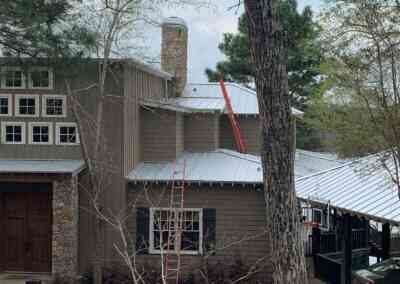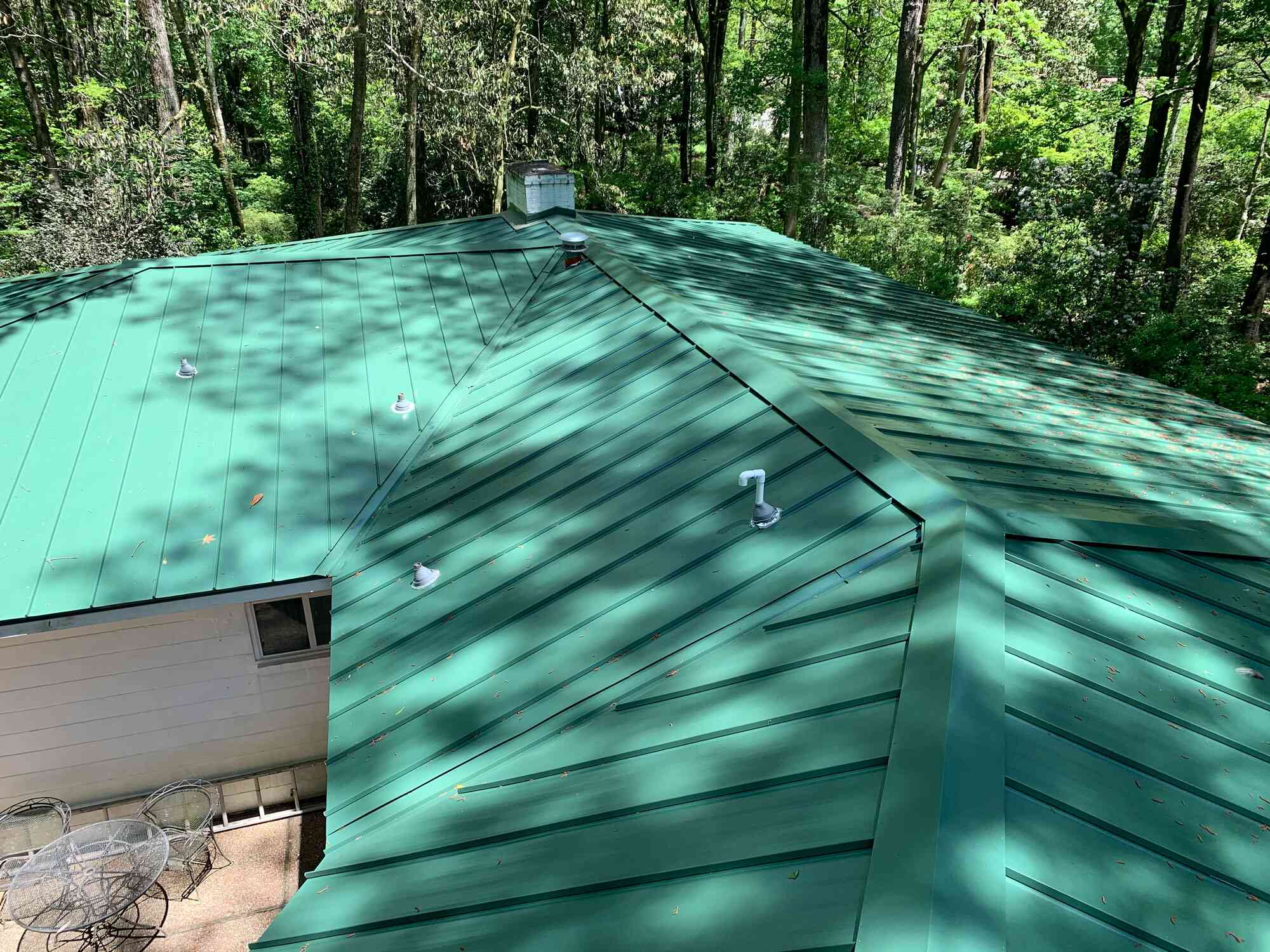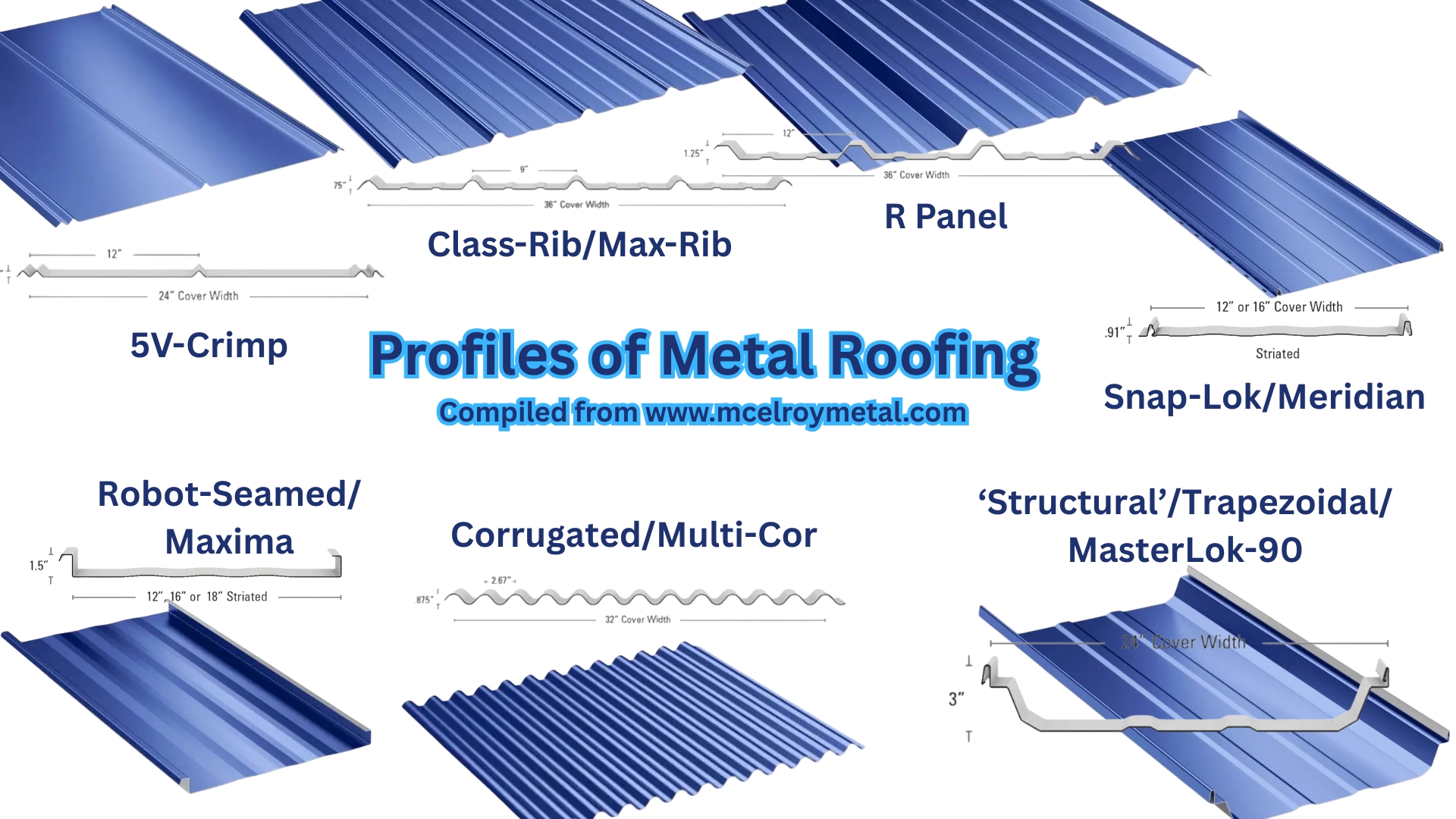Metal Roofing
There are two main options available: standing seam (better) and low-rib (cheaper, leak-prone due to penetrating fasteners), although specialty options exist (metal shingles, solar tiles, etc.).
1. Standing Seam Metal Roofing
Standing seam metal is the roof you buy once and quit worrying about. Panels lock together with no exposed screws, so rain, wind, and sun don’t get a cheap shot at your home or business. Expect 40+ years of service with almost zero maintenance—longer if you don’t let trees beat on it.
Yes, it costs more than screw-down “classic rib,” but this is the system architects spec when they want beautiful and bulletproof. We form panels on-site for a perfect fit, and when your project calls for curves, we bring out the big toys—a curving machine and a seaming robot—to make metal flow like sculpture.
Bottom line: if you’re done patching leaks and replacing shingles every storm season, this is the upgrade.
- Hidden fasteners = no rusted screws backing out in 10 years
- Rated for high winds common in Alabama storm seasons
- Cool, reflective finishes that cut attic heat and AC bills
- Colors & profiles that look right on a farmhouse or a modern storefront
- Installed by a crew that actually reads the manufacturer specs (because warranties matter)
In terms of standing seam, there are a few varieties: snap-lok (most typical for residences), clipped systems, and floating clipped systems with robot seams. Manufacturers such as McElroy Metal profile sample profiles on their website.
2. Low-Rib (Exposed Fastener) Metal Roofing
Low-rib metal — often called “classic rib,” “R-panel,” or “ag panel” — is the entry-level metal roof. It's made of large, ribbed panels fastened directly through the face with screws and rubber washers.
It’s affordable, fast to install, and tough enough for barns, shops, and budget-minded homeowners. But the visible screws aren't just detracting, they often leak with enough time (washers degrade and fail).
👍 The Pros:
- Lower cost than standing seam
- Simple to install over sheds, barns, and low-value structures
- Looks good from a distance (but can fade in color with time)
- Still gives better wind and hail resistance than shingles
👎 The Cons:
- Exposed screws = exposed problems. Every screw is a potential leak as washers dry out and metal expands/contracts.
- Screws back out in 8–15 years, leaving dozens of holes across your roof
- Hard to re-seal without looking like a patch job
- Can’t install on low slopes (<3:12) without serious leak risk
Bottom Line: Low-rib metal can be economical if you understand its risks. If this is your forever home or business, do it once and do it right with standing seam.
Some common profiles of metal are shown below. There are also all-U type corrugated profiles (PBC) as well as an all-V type corrugated profile (Zig Zag).
Get a free, no-pressure inspection and quote → 334-332-7799
Example Gallery


